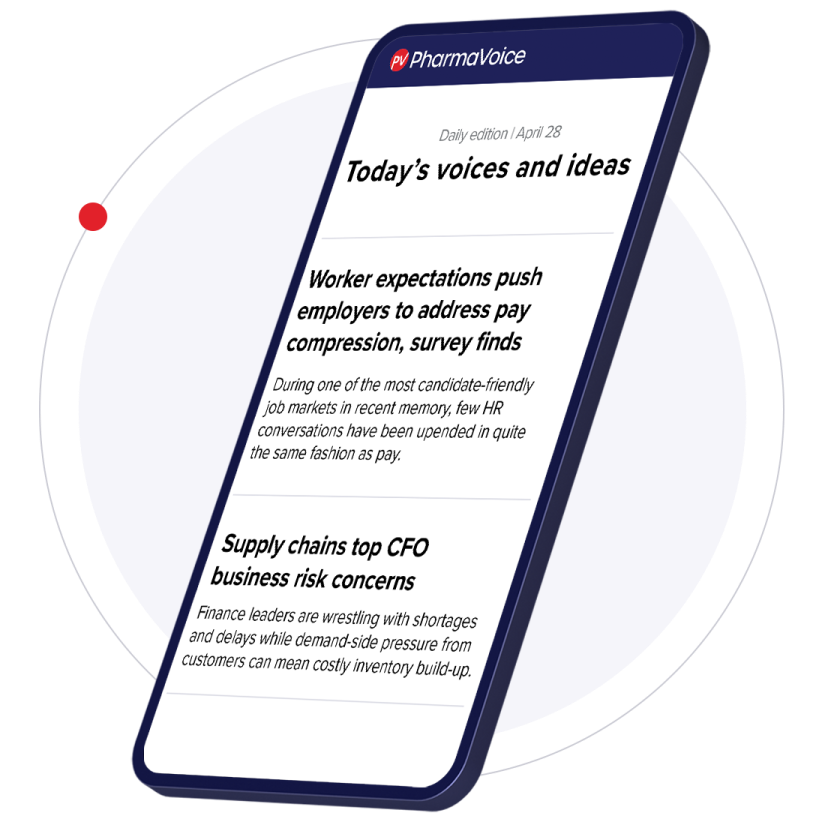The inhaler is well on its way to blockbuster status in the U.S., where it debuted in April 2001. Advair Diskus already is the fastestgrowing asthma medicine in Europe, where it is marketed under the name Seretide, and Goldman Sachs analysts fore cast that global sales of the drug will reach $2.4 billion by 2005. Advair, which combines Flovent (fluticasone propinate) and Serevent (salmeterol xinafoate), is probably the biggest product launch Glaxo SmithKline will have, not only this year but for the next several years. The speed of its adoption by patients and physicians, according to ana lysts, makes Advair the most successfully launched asthma treatment in the past decade. After only four months on the U.S. market, Advair accounted for about 10% of all weekly prescriptions for respiratory controller medications. Glaxo SmithKline already is No. 1 in this market, claiming more than 30% of total U.S. sales thanks to the prominence of the company’s existing asthma products, Flovent and Serevent. And analysts are predicting that Advair will enable the company to expand its market share in the hotly contested U.S. asthmamedication market, which is valued at $4.3 billion. ADVAIR is breathing new life into GlaxoSmithKline’s respiratory product line Advair, a oneofakind treatment for asthma, combines two topselling GlaxoSmithKline drugs in a single, more powerful product that is easy to use By Lynda Sears DR. STUART STOLOFF Advair has allowed patients to get on with their lives. A ADVAIR for asthma Advair was designed to switch patients from Flovent and Serevent, which are set to come off patent relatively soon. The incidence of asthma has increased across all ages, genders, and racial groups in the past two decades. There are currently about 17 million Americans suf fering from asthma; nearly 5 million of them younger than 18. Ranking as the most com mon chronic childhood disease, more than 10 million school days are missed annually because of asthma. Patients’ response to the new asthma med ication has been extremely positive, and this may be because they no longer feel as though they have to choose between convenience and effectiveness. Advair is very effective and yet is simple for patients to use. Advair offers the convenience of using one product twice a day. And instead of using a conventional aerosol inhaler, Advair comes in a dry powder and is inhaled in measured doses through a small plastic Diskus device. “I have seen a much higher level of patient compliance with Advair for a number of rea sons,” says Stuart Stoloff, M.D., Associate Pro fessor of Family and Community Medicine at University of Nevada, a member of the expert medical panel that helped develop current national asthma treatment guidelines. “One is the ease of taking a combination of medica tions in one inhaler, which takes five seconds, combined with the ability to feel the benefit. A patient may previously have been on a med ication that was helping but they didn’t feel it, so they stopped the medicine inappropri ately or didn’t maintain the required daily dose.” With any chronic disease, including asth ma, patient compliance can be a major obsta cle for pharmaceutical companies and the medical community. GlaxoSmithKline is monitoring the early signs of enhanced com pliance from patients on Advair. “By looking at refill rates for example, we know that authorized refills for Advair is higher than for Flovent, Serevent, and Singu lair,” says Simon Jose, VP of respiratory mar keting for GlaxoSmithKline. “We have some data out of the U.K. and Germany — the product has been on the market longer in Europe — showing that we are getting more refills with Advair than we do for Flovent or Serevent separate ly. So we have signs and sig nals that patients are responding, and we are con fident that will improve compliance.” Serevent and Flovent were Glaxo Well come’s medications before the company merged with SmithKline Beecham to create the world’s secondlargest drug company. Flovent is a corticosteroid antiinflammatory that reduces swelling of the air passages and helps prevent asthma attacks. Serevent is a longacting bronchodilator that opens narrow airways. “There are two components of asthma,” says James Donohue, M.D., professor of medicine for the Division of Pulmonary Medicine, with the University of North Car olina at Chapel Hill School of Medicine. “Not only is there tremendous inflammation, and that’s a huge problem that inhaled steroids are directed to treat, but additionally there is dys function of smooth muscle. That needs to be treated with a longacting beta agonist. Both components play crucial roles in causing asth ma symptoms such as shortness of breath, wheezing, chest tightness, and coughing.” The use of multiple controller medications per patient has been growing because — until the advent of Advair — the disease couldn’t be effectively treated with a single product. “There is a desire, and now a move, in the market to avoid continually increasing the dose of the steroid,” Mr. Jose says. “A physi cian might start somebody on a low does of steroid, and when the patient doesn’t respond, the doctor might add another therapy rather than increase the dose of steroid.” Advair, however, allows patients to use an inhaled steroid in the appropriate dose and maximize the benefit by using the longacting bronchodilator. “The combination of the two molecules working together affords a greater opportunity for patients to identify improve ment, because they can feel the effects,” Dr. Stoloff says. GlaxoSmithKline is marketing Advair to patients who are on one or more controller therapies, as well as patients who are only pre scribed albuterol, which is commonly used by asthmatics as a rescue medication. High doses of albuterol will not treat inflammation and may mask a condition that is worsening. “It has been amazing to find how much use of albuterol is going on in patients who are not taking a controller medication,” Mr. Jose says. “And some of them are taking frequent puffs. They are perfect candidates for Advair.” Understanding the disease “Many patients with asthma don’t really understand what asthma is,” Mr. Jose says. “We conducted a survey a couple of years back in which about half of the surveyed population thought asthma was a symptomatic disease that was associated with bronchoconstriction, a transient condition that would go away. Patients didn’t appreciate that asthma was a chronic ongoing disease that needed daily treatment. It’s not surprising then that patients who view asthma as a symptomatic disease don’t seek out chronic care.” n Americans with asthma: 14.6 million n Children with asthma: 4.8 million children under age 18 n Asthma prevalence:5.4% of Americans reported having asthma in 1994,a 75% increase since 1980 n Asthma prevalence in preschool children: 5.8% of children under age 5 had asthma in 1994 (as reported by a family member),a 160% increase since 1980 n Asthma deaths:more than 5,000 each year n Asthmarelated hospitalizations: 466,000 in 1994 n Emergency room visits for asthma: 1.9 million in 1995 n Healthcare costs for asthma care: estimated at more than $6 billion a year n Missed school days:more than 10 million a year n Loss in productivity by working parents caring for children who miss school due to asthma:an estimated $1 billion a year DR.JAMESDONOHUE There are two components of asthma,both play crucial roles in causing asthma symptoms such as shortness of breath,wheezing,chest tightness,and coughing. ADVAIR for asthma Another problem — common to many chronic diseases — is that patients will down grade their health expectations. A person with asthma might expect to wheeze when walking up the stairs or running for a bus. But for most people with asthma, there is no reason the con dition should continue if they are properly treated. “We know from the literature, if asthma patients take inhaled corticosteroids like fluti casone, hospitalization rates go down, and death rates plummet,” Dr. Donohue says. “Very effective therapy is available, and yet patients have learned to live with their symptoms. They don’t bother about it. They don’t go to doctors.” Asthma is under treated as well as under diagnosed because doctors are reluctant to put a label on someone who otherwise looks healthy. “Doctors may not mea sure spirometry or do the work up,” Dr. Donohue says. “They tell the patient that they have bronchitis and give them an antibiotic, and there’s no follow up. It is the responsibility of both the patient and the physician to understand the disease. Unfortunately there is a stigma attached to a chronic disease. People don’t want to have a label, they don’t want to be called an `asthmatic.’ ” Asthma rates are increasing at about 5% per year in the U.S., and the mortality rate also has grown. GlaxoSmithKline provides educa tional materials directed to patients through physician offices to counteract the stigma associated with the chronic condition. Accord ing to ScottLevin Associates, Advair Diskus was GlaxoSmithKline’s toppromoted drug during spring 2001, representing 28% of the company’s total product mentions to medical directors. “Our salesforces arrange physician pro grams and we incorporate data and messages into those programs to try to encourage and improve treatment,” Mr. Jose says. During the first week of Advair’s U.S. launch, 2,300 sales representatives visited 70,000 physicians to promote the drug. “To a certain degree, one of our challenges is to ensure that doctors ask the right ques tions of patients,” Mr. Jose says. According to the marketing executive, the company is trying to encourage physicians to go beyond the general question of “How is your asthma?” By getting physicians to ask more specific questions, such as “How often do you use your albuterol?” or “When did you last wake at night wheezing?” there is an improved dialogue about the patient’s disease state. One reason physicians like Advair Diskus is because it takes so little time and energy to teach patients to use the device. Nor does the physician need to reteach the patient how to use Advair three months later. Advair Diskus is a breathactivated device, so there is no need for spacers or coordinated squeeze and breathe techniques as there is with some other inhaled medication. In addition, Advair Diskus has a builtin dose counter that helps patients keep track of their doses. The last five numbers on the dose counter are in red to remind a patient to get his or her prescription refilled. “It’s a mechanical proce dure,” Mr. Jose says. “Once taught, never forgotten. With traditional metered dose inhalers, the patient’s technique can go off track. Physicians often have to have reminder sessions on proper application. “There are other devices that are breath actuated, but nothing has all of the differ ent benefits that the diskus has,” Mr. Jose says. “The device was developed with certain patient goals in mind. It was developed around the needs of the patients in the market rather than someone in R&D developing it and saying here, try to sell it.” “Patients can learn the techniques in less than a minute, which is another tremendous advantage for a busy doctor,” Dr. Donohue says. “Teaching people to use the diskus is much easier than teaching them how to use metereddose inhalers, which takes a substan tial amount of time.” A new gold standard Easy to administer is one advantage, but it is Advair’s clinical performance that will make the drug the gold standard in asthma care, industry experts say. Clinical trials demon strated that Advair Diskus was significantly more effective at improving lung function, controlling asthma symptoms, reducing the use of rescue albuterol medicine, and reducing the incidence of exacerbations than either of its component agents used alone at the same doses. “Advair clearly is the best drug available,” Dr. Donohue says. “We know that from our clinical experience. The literature supports Advair in headtohead comparisons of Advair versus a combination of Flovent plus mon telukast and Advair versus montelukast. Controller medications COMBINATION BETAAGONIST/ CORTICOSTEROIDS n Advair Diskus (salmeterol xinafoate/fluticasone propinate): GlaxoSmithKline n Symbicort (budesonide/ formoterol): AstraZeneca CORTICOSTEROIDS n Azmacort (triamcinolone acetonide):Aventis n Flovent (fluticasone propinate) GlaxoSmithKline n Pulmicort (budesonide): AstraZeneca n QVAR (beclomethasone dipropionate): 3M Pharmaceuticals n Vanceril (beclomethasone dipropionate):ScheringPlough LEUKOTRINE MODIFIERS n Accolate (zafirlukast): AstraZeneca n Intal (cromolyn sodium):Aventis n Singulair (montelukast):Merck &Co. n Tilade (nedocromil sodium): RhonePoulenc Rorer BETA AGONISTS n Bambec (bambuterol): AstraZeneca n Foradil (formoterol): Novartis n Oxis (formoterol):AstraZeneca n Serevent (salmeterol xinafoate): GlaxoSmithKline Relief medications BETA AGONISTS n Bricanyl (terbutaline): AstraZeneca n Inspiryl (salbutamol): AstraZeneca n Proventil (albuterol): ScheringPlough n Ventolin (albuterol): GlaxoSmithKline n Xopenex (levalbuterol): Sepracor SIMON JOSE It has been amazing to find howmuchuse of albuterol is going on in patients whoare not taking a controller medication.And some of them are taking frequent puffs. THEYAREPERFECT CANDIDATES FOR ADVAIR. ADVAIR for asthma Those were overwhelmingly favorable for Advair, and it’s the same in our practice.” “Advair has allowed patients to get on with their lives,” Dr. Stoloff says. “Some of my patients are athletes at the university playing Division I sports, and for the first time they aren’t worried about where their rescue inhaler is. Advair has afforded them an opportunity to participate and compete on a level that they have not had available to them in the past.” Inhaled steroids have come under intense scrutiny and leukotrine modifiers such as AstraZeneca’s Accolate and Merck & Co.’s Sin gulair are viewed as safer alternatives. These medications have been promoted aggressively, with big dividends, but questions remain with regard to their efficacy. Accolate is a nonsteroidal tablet indicated for the prevention and continuous treatment of asthma in adults and children 5 years of age and older. The AstraZeneca product has twice daily dosing, providing 24hour leukotriene receptor antagonist coverage to help prevent asthma breakthrough. Singulair, Merck’s onceaday pill for asth ma control, is a leukotriene receptor antago nist for the prevention and chronic treatment of asthma, and the first asthma controller ther apy approved for children as young as 2 years. Singulair has been shown to reduce day time asthma symptoms and nighttime awak enings, reduce the number of asthma attacks, improve lung function, and improve overall asthma control in patients age 2 through adulthood, with a demonstrated safety profile. “Inhaled steroids is the only class of com pounds that has been shown to reduce hospi talizations, reduce ER visits, and reduce the risk of death,” Mr. Jose says. “It’s the only class of compounds that has any data, and it’s com pelling data. There needs to be a greater understanding of the risk of not using inhaled steroids.” Global roll out Asthma prevalence is increasing worldwide because of growing levels of environmental pollutants, combined with greater awareness of the disease and a corresponding increase in the vigilance of physicians. Advair Diskus is currently available in 38 countries, and is mar keted under the trade names Seretide and Viani. The compound first was approved in Sweden in December 1998 and now is mar keted in many parts of Europe, Latin America, Asia, and in Canada. A alysts report world wide sales of asthma drugs should top $7 bil lion this year and increase by 74% by 2003 to $12.2 billion. In the U.S., Advair Diskus is indicated for the longterm, twicedaily, maintenance treat ment of asthma in patients 12 years old and older. It is not indicated for the relief of acute bronchospasm. “We knew we had a good product with Advair,” Mr. Jose says. “We know this market well. Clearly we have been in it for a while with Flovent and Serevent. We have been very pleased with Advair’s success as well as know ing that it has been a tremendous help to patients. We are inundated with letters and have simply been amazed at what a difference Advair has made in people’s lives.” Research studies are currently being con ducted to determine Advair’s efficacy in the treatment of chronic obstructive pulmonary disease or COPD, the fourthleading cause of death in the U.S. GlaxoSmithKline’s Serevent is currently on the market for the treatment of COPD. Combined, asthma and COPD affect more than 300 million people worldwide and con stitute a $13.9 billion market. F PharmaVoice welcomes comments about this article. Email us at [email protected]. JAMESDONOHUE,M.D.Professor of Medicine,Division of Pulmonary Medicine,The University of North Carolina at Chapel Hill School of Medicine,Chapel Hill, N.C.; the School of Medicine of The University of North Carolina at Chapel Hill educates students and professionals of the health and biomedical sciences, conducts scholarly investigation in biomedical,behavioral,and social sciences, and renders service to the people and institutions of the state, region,nation,and,as appropriate, throughout the world SIMON JOSE.VP, respiratory market ing, GlaxoSmithKline,Philadelphia; GlaxoSmithKline is a leading research based pharmaceutical and healthcare company STUART STOLOFF,M.D. Associate Professor of Family and Community Medicine,University of Nevada,Las Vegas;The Department of Family and Community Medicine is committed to excellence in graduate training in family medicine Experts on this topic I f a company can demonstrate that its product has a significant improvement in outcomes and the cost associated with those outcomes,as well as a slight discount, then the sales rep has a pretty compelling case to present to man agedcare organizations. Before the launch of Advair Diskus,GlaxoSmithKline was able to conduct robust and rigorous outcomes analysis show ing that if a patient uses both Flovent and Serevent, there is a cost savings compared with using an inhaled steroid and a leukotriene modifier.The company was able to approach man agedcare organizations with data that tied pharmacy claims and medical claims together. “Normally, a company could never do that before launch because the product isn’t available yet, but of course we had the two separate elements on the market,”says Simon Jose,VP of respiratory marketing for GlaxoSmithKline.“We were able to generate excellent data show ing that hospitalization and ER costs were reduced by using a combination of Flovent and Serevent, more so than with other combinations. “The sheer pent up demand for this product — the pressure from pre scribers — has helped as well,”Mr. Jose says.“Managed care can certainly con trol access, but at the same time there is an element of very strong demand and desire on the part of customers.” The managedcare advantage SIMON JOSE Advair has experienced very rapid access to managedcare formularies and is currently 85% to 90% covered.
An article from


Advair: The Drug to Watch
Filed Under:
Research & Development









